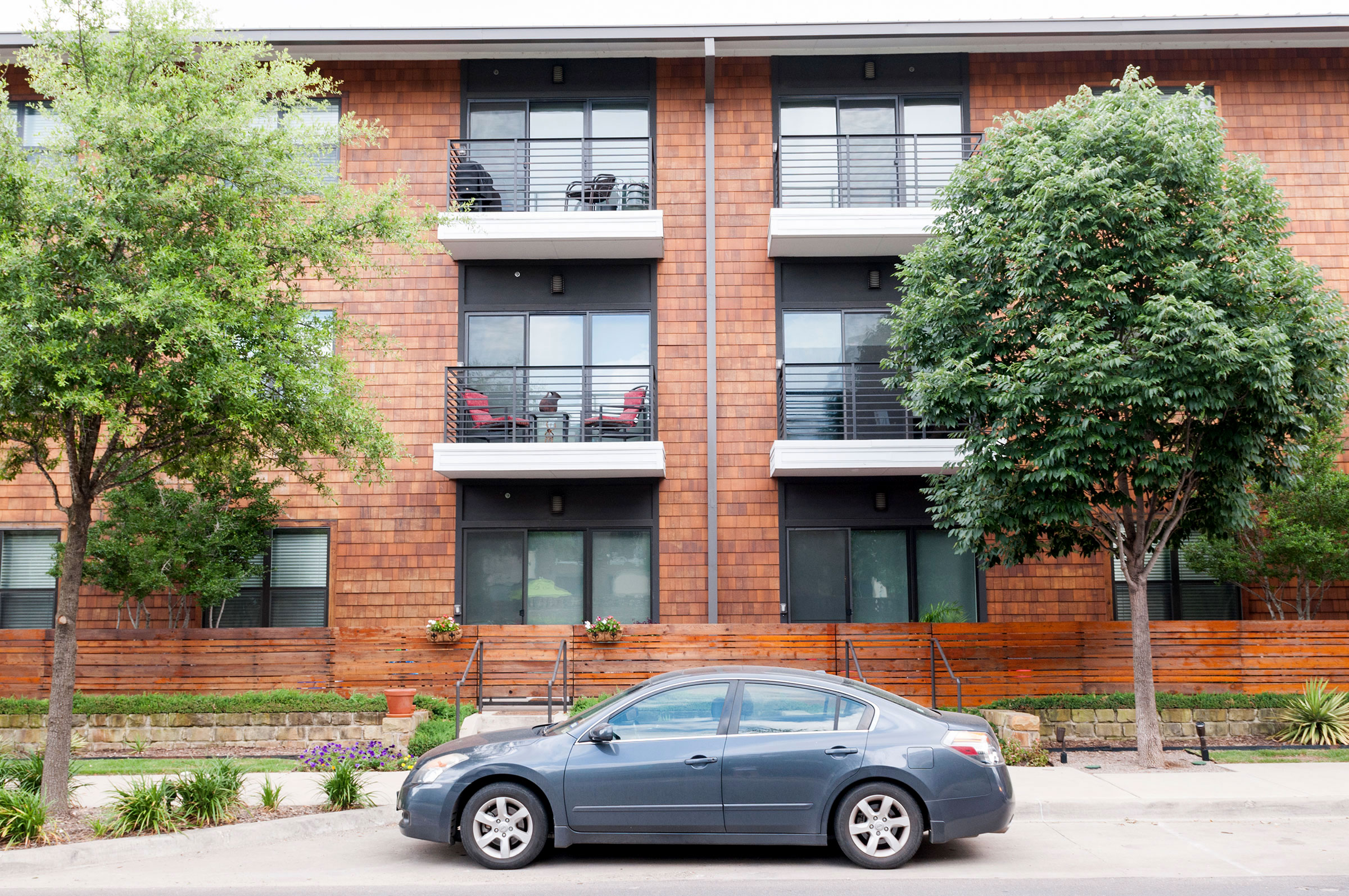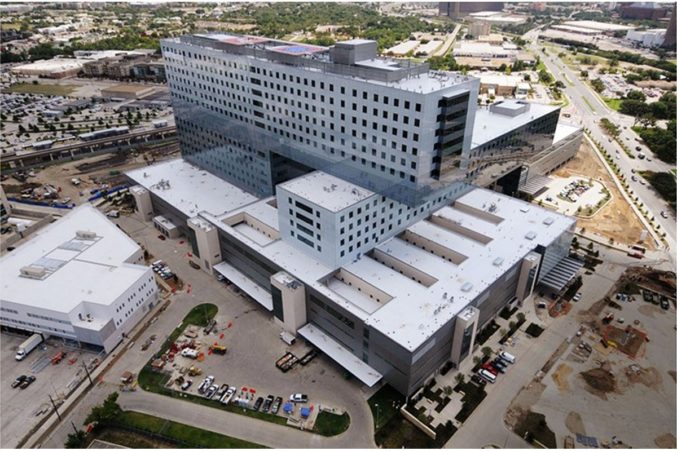During the first month of 2022, Dallas landlords filed 2,056 evictions against tenants within the city limits. While these numbers are about half of what was filed during the same period in 2020, this is still the highest point in the pandemic. For much of January, the only American city where evictions were filed more frequently than Dallas was Houston, where about a million more people live.
City officials and housing advocates are watching this matter closely. There is concern that Dallasites fighting housing insecurity are more vulnerable than they’ve ever been during the pandemic, right as a patchwork of federal, state, and local protections begins to fray.
The nonprofit Child Poverty Action Lab began tracking eviction data on behalf of Dallas County during the pandemic. The data can be segmented by city and county, but it can also explore more granular trends, like by ZIP codes. Before it launched its Eviction Filing Dashboard, this data didn’t exist, and certainly wasn’t presented in a dashboard that allows you to see trends over time.
It is a gift: the city now has eviction data going back to 2017, allowing policymakers to see the problem before and during the pandemic. The hope is that it will inform new protections for this population after pandemic-related protections end.
“We have an opportunity to think about the right set of supports to keep renters housed and ensure property owners meet their obligations,” says Ashley Flores, senior director at CPAL. “So how can we creatively work together to put the right programming and policies in place to make that happen?”
In spring 2020, the city of Dallas enacted an ordinance that gives tenants facing eviction 21 days to provide proof to their landlord that COVID affected their ability to pay rent. If the tenant replies in that window, they then have 60 days from the date the eviction was issued to enter a payment plan, apply for rental assistance, or arrange for other plans to pay back rent.
The city used federal money to stand up a $40 million rent relief fund, which has been spent. The second round is $20 million, and most of that is still available. Jessica Galleshaw, the director of the city’s office of community care, does not expect that money to last long. Federal law allows cities to pay up to 15 months in back and prospective rent. It’s not clear whether the feds will pay for a third rent relief fund.
“We’ve seen so many applications come in and so many of them with the little flag in our system showing that this person not only is meeting one of our priority criteria, in terms of being very low income or potentially unemployed for a significant amount of time, and is facing an eviction,” she said. “We feel like we’re working against the clock.”
But here is the tricky part: tenants who are on the edge of eviction often don’t know about the resources available to them, according to pro bono attorneys who have spent the past two years representing these clients. They say justices of the peace—who have the power to grant the eviction—aren’t asking them whether they’re aware once their cases get to court. If the tenant doesn’t know, the justice of the peace isn’t asking landlords whether they followed the rules and granting the eviction.
“When tenants walk into a courtroom with a lawyer, they win a lot. When they walk in without a lawyer, they lose almost every time,” said attorney Mark Melton, who briefed a City Council committee about his pro bono efforts to support tenants who are being evicted. “Even if the law says you have to give a notice, these judges are not requiring the landlords to prove up that they gave a notice.”
Melton sends postcards to every tenant who winds up on a court docket. Legal Aid of Northwest Texas sets up inside the courts, offering free representation to tenants.
All of this infrastructure was stood up during the pandemic. Prior to March 2020, the city’s rent relief programs were for targeted populations, like folks experiencing homelessness or those who had an income that was a certain percentage below the median for the county.
The legal effort came together quickly: Legal Aid of Northwest Texas became an official partner after the ordinance was issued. Melton’s group, the Dallas Eviction Advocacy Group, registered as a legal nonprofit last year. Before the ordinance, very few people were following evictions in Dallas. The United Way stepped in to help issue the rent relief.
The ordinance is tied to the governor’s declaration of disaster, which he most recently renewed on January 22. But when it does expire, the city’s tenant protections will, too. That means the process will revert back to how it was: the landlord issues a notice to vacate, the tenant has three days to settle with the landlord before the eviction is filed in court and the proceedings begin.
“The ordinance provides an opportunity for communication and provides for rental assistance and relief,” says Dr. Priscylla Bento, a policy manager in the city’s office of equity and inclusion. “We do have rent relief available. Removing that provision limits the amount of time tenants may have to apply for that relief.”
These are some of the most vulnerable residents in the city, those for whom a few hundred dollars a month means having an apartment or not. The ordinance is largely working. This population isn’t cycling through again and again after receiving a break from the court.
According to CPAL, 13.6 percent of all eviction cases in the city of Dallas have involved repeat defendants. That means folks who came to court, received the reprieve, and wound up back in the same position after receiving support. That’s 3,484 cases with repeat defendants out of 25,611 total since March of 2020.
But those protections will at some point expire. The City Council and city staff have important data showing how many people are at risk, before and after the pandemic. It’s expensive for landlords to turn over an apartment and rent it to someone else. It would behoove the city to invest in ways to keep people housed.
“At some point the federal rent relief will run out and we’ll need to have another conversation about how to support households experiencing housing insecurity without federal resources and also ensure that landlords and property owners can meet their obligations,” said Flores, with CPAL.
The City Council discussed this at the ad-hoc meeting last month. Councilwoman Cara Mendelsohn suggested exploring sunsetting the ordinance and discussing it in the council’s housing committee, which vets such policies.
“This was meant to be a temporary program,” she said. “I’m not saying we might not need to talk about evictions in the housing committee, we probably do. But for … what this was meant to do, we’ve already accomplished it.”
If, indeed, the city chooses to pursue permanent protections for renters facing eviction, it has the data to inform such a policy. It can see that the 75247 ZIP code had 24 eviction filings per 1,000 renters, more than triple the city’s rate of 7 per 1,000. Maybe it should pay special attention to what’s happening there. The city now knows that the median eviction filing is for $2,253. Maybe that could inform how much rent relief the city needs to provide each month, or how much it needs to request from the feds.
Most of the data it needs to inform that conversation is now at its fingertips. It’s time to start talking.
Author







